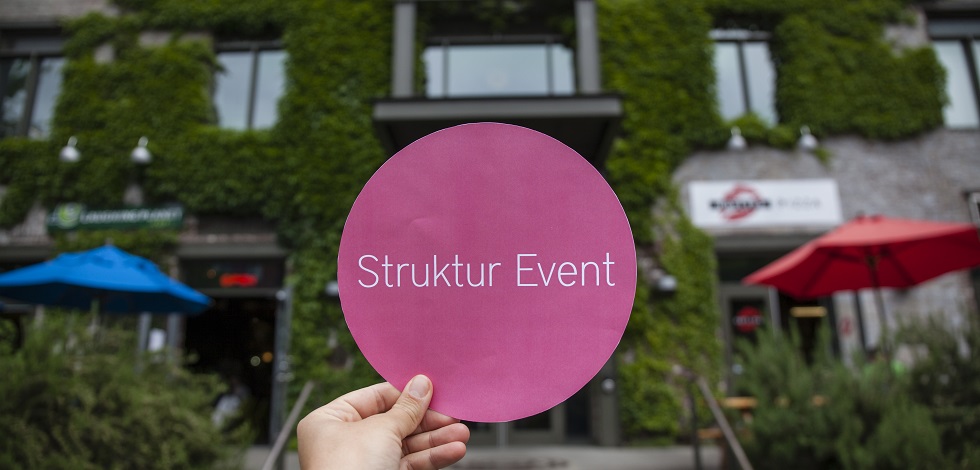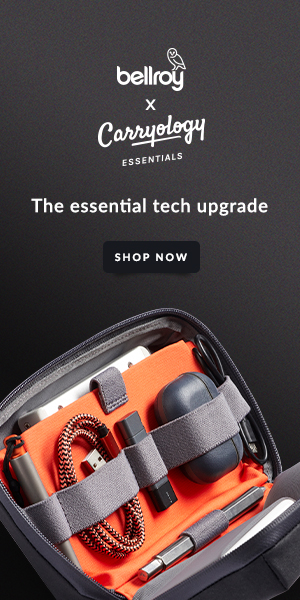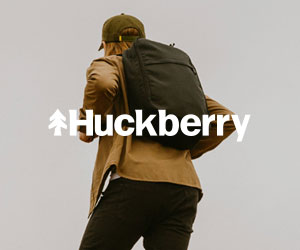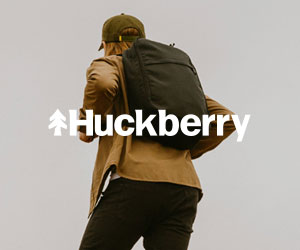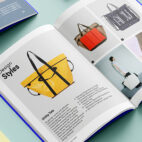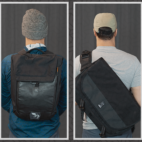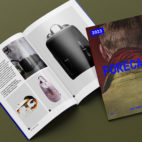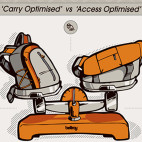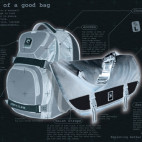Struktur Event :: 2016 Recap
Struktur Event is a creative conference for people across the outdoor design industry to come together, share ideas and research, and ultimately push the industry forward through a collective effort. The conference hosts a range of workshops and speakers, covering topics as diverse as materials, design skills, manufacturing and business models. But don’t worry if you couldn’t make it this year – we’ve got some of the highlights below with our Struktur Event 2016 recap…
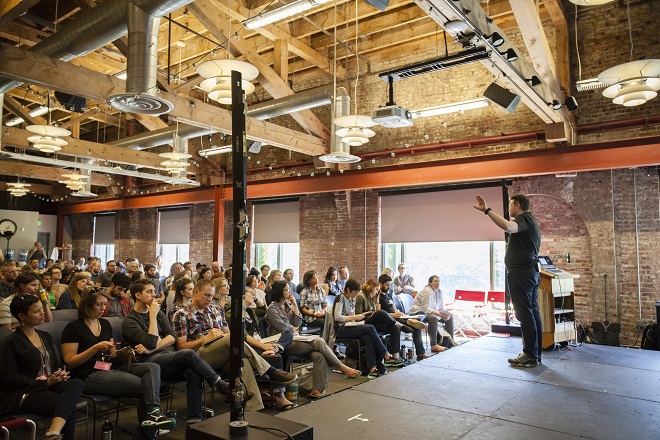
Day 1 – Workshops
Woolmark
Remember that old logo on your mum’s balls of wool in the 80’s? Well those guys are an industry body that is focused on developing the Australian Wool industry on the international stage. Australia is the world’s largest producer of Merino wool. The continent makes about 80% of the global supply of fine wool, with around 71 million sheep calling it home. And when it comes to fine wool, Merino is the king.
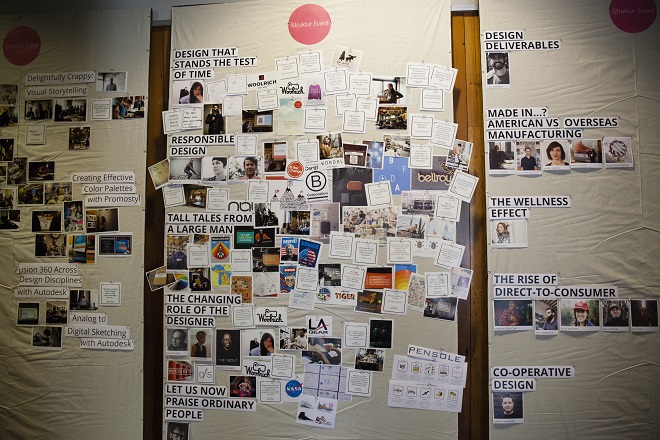
Wool is going through something of a renaissance, as outdoor and performance companies realise how awesome this fibre is. And amongst that, fine wool is especially loved for apparel because it itches less. So when does wool itch? Any fibres thicker than 30 microns start to scratch. Basically, the fibres become too rigid and start pricking rather than folding over. But here’s the tricky bit – when you specify a 19micron wool, that’s 19microns on average. So you also need to know the coefficient of variation to know whether you’ll have variation that takes some fibres over 30microns.
“Wool is going through something of a renaissance…”
Wool also has the added benefit of hiding smells. Its inherent alkalinity attracts bacterial waste (which is generally acidic), bonding and locking it down. Then when you wash wool, the detergents shift the pH to neutral, which releases the waste down the drain. And when it comes to stain resistance, the lower the surface energy of the material, the less it will attract dirt and stains. So you want quite inert materials if you want to shed the grime. Pilling is also an important consideration. Inter-fibre friction reduces pilling. More brushing and slippery things like silicons increase pilling. Denser and woven wools pill less.
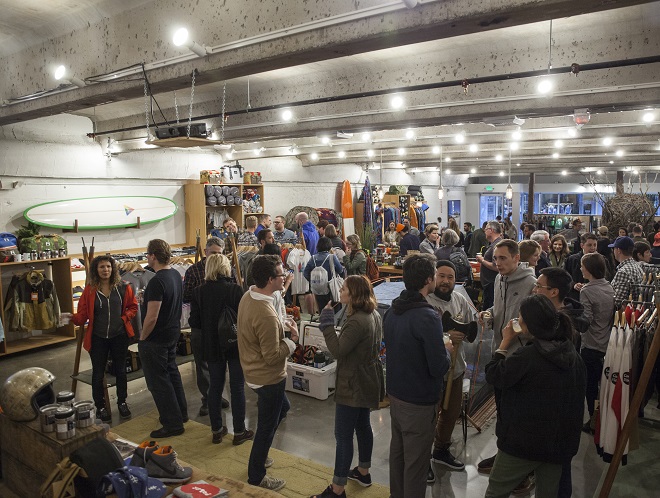
Oh, and check out Allbirds for an example of trying new things with wool, namely footwear in this case.
Day 2 – Talks
Design that stands the test of time
Karuna gave a great talk on moving from more fashion-led companies to a traditional manufacturing and heritage business, in this case from the likes of Dolce & Gabbana, Ralph Lauren, Abercrombie & Fitch and American Eagle Outfitters to Woolrich. Her story largely focused on the additional meaning that people impart onto their goods, especially through continued use and enjoyment. She highlighted that the best way to be ‘green’ is to continue to use and love a product for as long as possible.
Karuna spoke of Woolrich design goals that included quality, function, beauty and history. History represented the story and/or the context of the product, which stands for so much at Woolrich. The brand has a number of styles that have been consistent for generations, even receiving praise from numerous customers regarding shirts that had lasted for up to 67 years. The focus is on quality fabrics, quality constructions and ‘classic’ cuts.
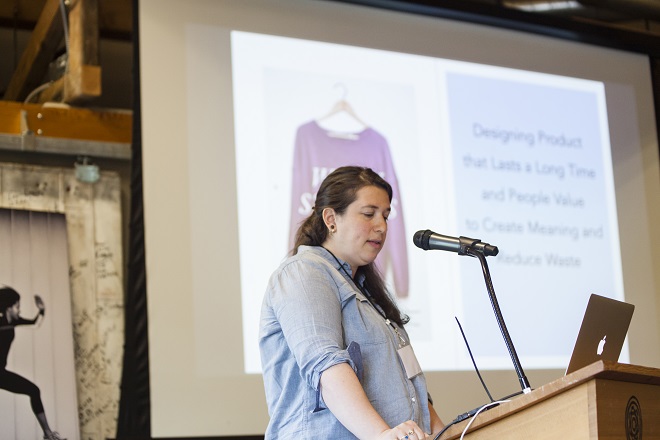
What was most interesting was her early lack of understanding of certain Woolrich styles when she joined, i.e. not getting why an item was a best seller. In particular she mentioned this style. It is a consistent good seller and has been for decades, with minor tweaks and adjustments causing it to remain similar in style over the years. Not all customers of a brand are the fashion-forward early adopters who designers strive to please and appeal to, and that is not a bad thing. Having a 67-year-old shirt praised for its longevity and importance within a family’s history would not have occurred if that shirt was at the forefront of fashion 67 years ago. In a modern context this base customer is often undervalued and underserved and in some cases not respected when respect for them should be of the highest priority.
“…the best way to be ‘green’ is to continue to use and love a product for as long as possible.“
Karuna drew attention to Kondo’s “only keep the objects that bring you joy”. This line feels both relevant and focusing for us designers, as we should be designing products that bring joy for years to come.
Responsible Design
Deborah Alden – The Brooklyn Fashion + Design Accelerator
This multifaceted discussion focused on making a responsible impact with design. Nau discussed building a business centered on causing minimal environmental impact whilst aiming to merge fashion and the outdoors.
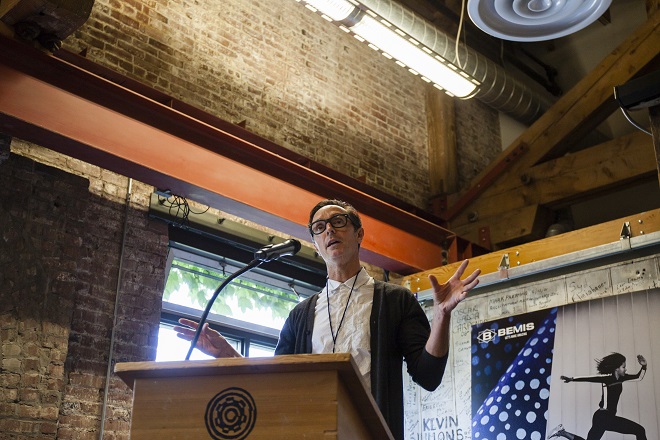
Deborah works with the Brooklyn Fashion + Design Accelerator in a small production studio based in, you guessed it, Brooklyn. Here small starting design businesses have access to low-volume production and a mill/supplier dating service is also offered. Specific criteria must be met for any applicant, and as such small businesses are built and too big for the accelerator within 18 months. It seems a great platform to launch a brand from.
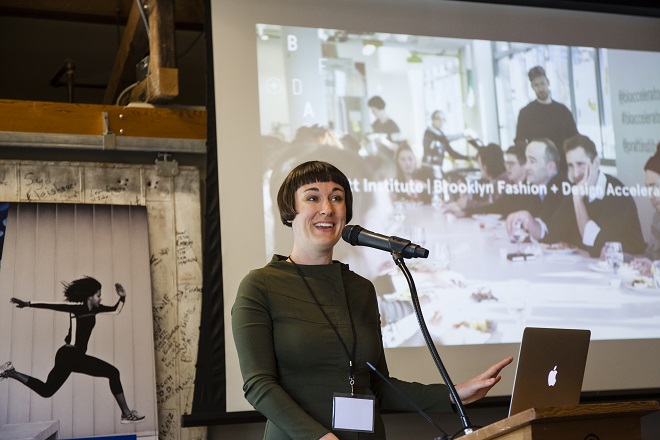
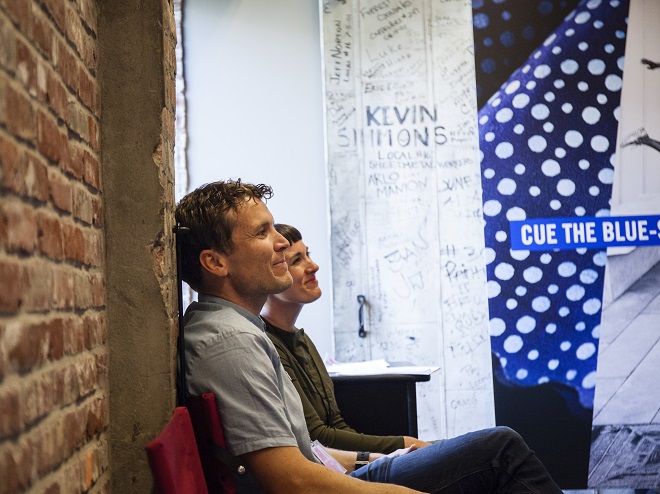
Andy from Bellroy discussed how to effectively implement the lofty ambitions of many a small business. How to give effectively and the new wave of business that is focused on steering well clear of the single ambition of maximising shareholder returns. This is explicitly exemplified by the B Corp certification which rates businesses on their social, environmental, accountability and transparency initiatives and performance.
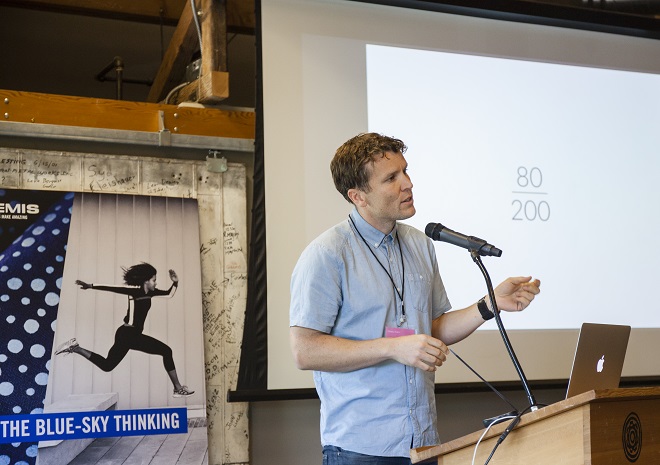
A theme that this panel reiterated was that one of the absolute best things that can be done for better responsibility is to design and produce goods that are used and loved for as long as possible.
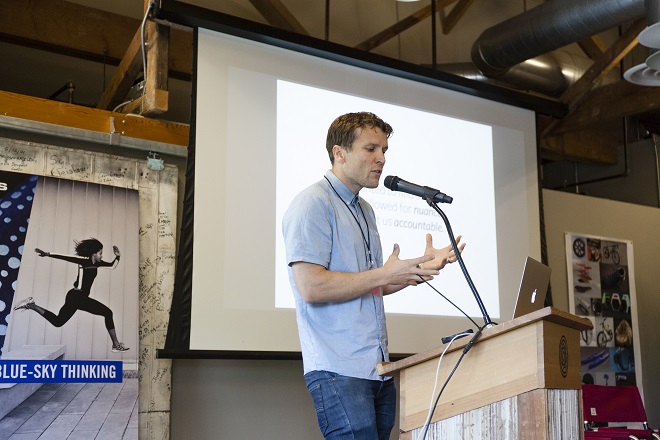
Tall Tales from a Large Man
Aaron James Draplin – Draplin Design Co.
From a small town with limited resources, but filled with passion, Aaron managed to self-build his own portfolio and work to a level where he was called upon by none other than Obama to design the US stimulus package logos. His presentation was in a crazily personal style, showing his humour and passion for work output.
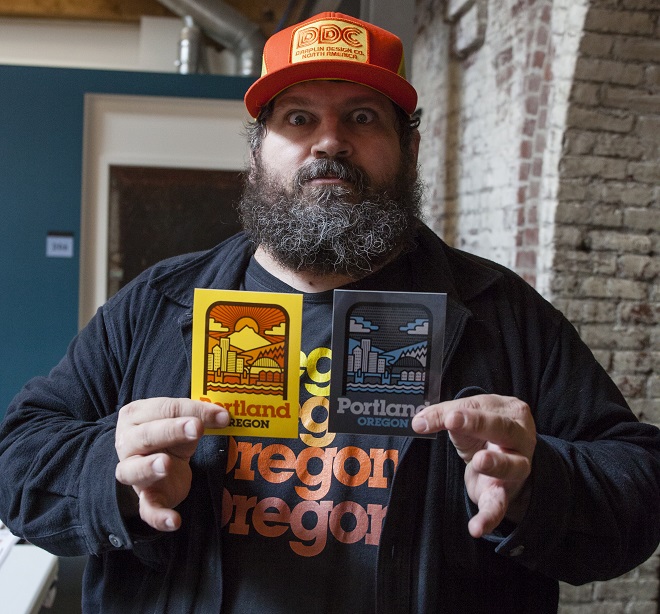
Aaron has built a personal brand based on the now iconic Field Notes sketchbook, and he showed examples of pages filled with iteration after iteration of his logo works. Romanticising the past, his weekends are filled by driving across the US searching garage sales for ‘expired’ logos that worked within the limitations of old technologies, the constraints of poor printing technologies and hand-brushed artwork and lines.
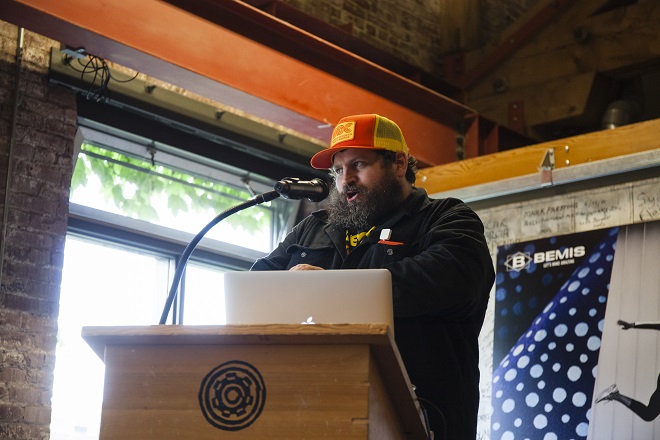
It is hard to sum him up or the energy of his presentation; this video is great for showing his ethos, and this is a lot of what was covered at Struktur.
“…his weekends are filled by driving across the US searching garage sales for ‘expired’ logos that worked within the limitations of old technologies…”
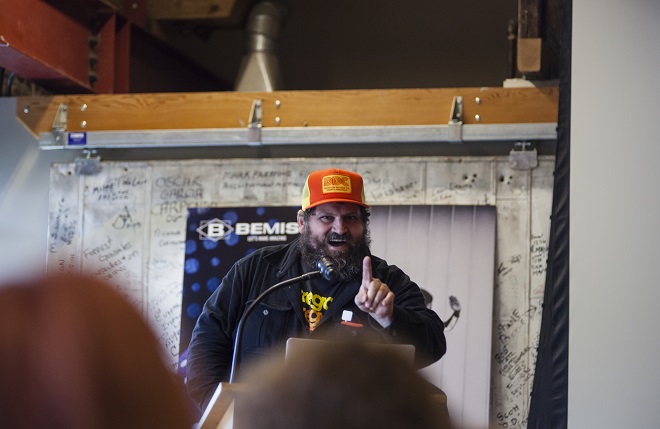
Takeaways? Perhaps make your work your passion and you’ll be able to outwork everyone. Oh, and trust in karma. Don’t only work for projects that give you a financial return, as Aaron has repeatedly done things for good folk for free or for low money, that later came around to be good for the universe.
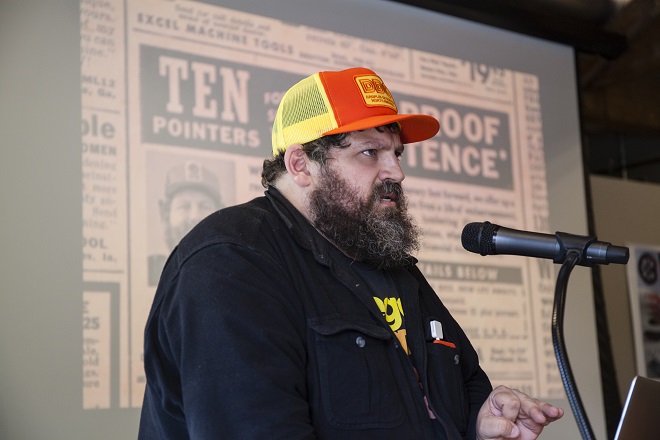
“Don’t only work for projects that give you a financial return, as Aaron has repeatedly done things for good folk for free or for low money, that later came around to be good for the universe.“
Day 3 – Talks
Design Deliverables
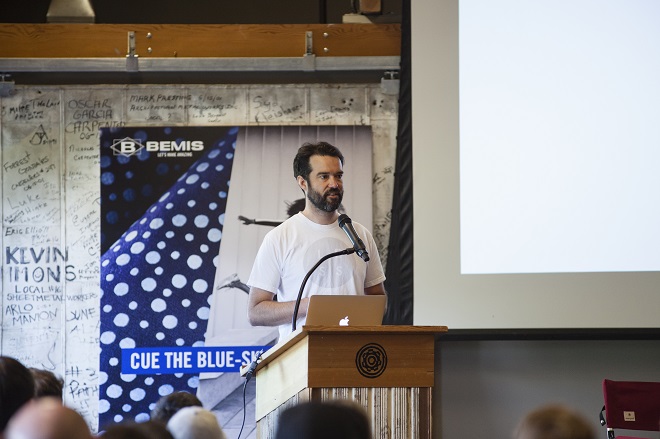
Design is a process, more than an activity. Carl provided great insight into what the Arc’teryx design process encompasses, and what they believe Arc’teryx design needs to be:
Innovative: If you’re looking at competitors, focus on what they’ve achieved with a design rather than how they’ve achieved it.
Relevant: It should be compelling, contributing to better experiences.
Authentic: Create genuine performance that improves user experiences. Product should help customers understand how passionate designers are about this.
“If you’re looking at competitors, focus on what they’ve achieved with a design rather than how they’ve achieved it.“
Resolved: A measure of how elegantly you bring form and function together. Having your own manufacturing helps with this, as you can design in ways that are more repeatable.
Beautiful: Beauty inspires beauty. Beauty reduces adoption friction.
Consistent: Define a specific set of design values, and then apply them consistently. Consistency builds loyalty.
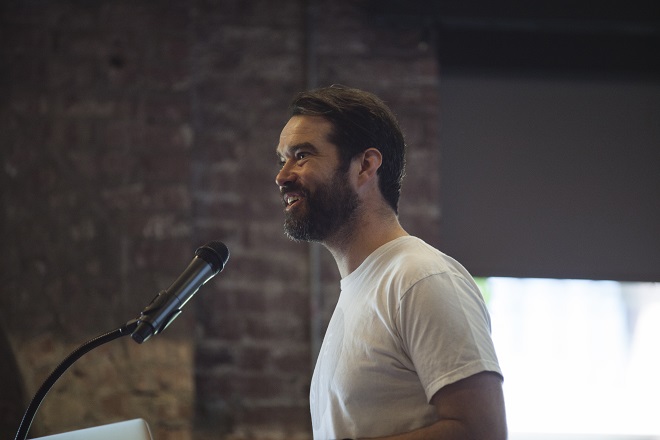
There were lots of takeaways from this talk. For instance, the better you understand your current tools, the better you can design the tools you’ll need in the future. In addition, when you want a communal outcome, you need a common vocabulary. Carl stressed the importance of an internal vernacular that is understood by all within the business, a common language to describe elements and features of product. Without a unified language it is hard to apply and understand feedback from other sectors within the business.
“…when you want a communal outcome, you need a common vocabulary.“
Arc’teryx relies on designers who experience the world within which they are designing. If the designer does not know what it is to be cold and a little scared on a mountainside they will not understand how important their gear is or what it means to truly rely on your gear. Arc’teryx take design really seriously. They make product for places and activities of consequence, so they need to.
“Arc’teryx relies on designers who experience the world within which they are designing.“
Co-operative Design
REI is the world’s largest outdoor retailer with 150 stores. Started in 1938 and based on a co-operative model, they have an internal design department that is focused on private label product.
Nasahn spoke a lot about the stigma around private label product, and how it doesn’t need to mean cheap or compromised. From the first private label that came out of Brooks Brothers, there have been many that now offer compelling quality, value and solutions. Trader Joe’s and Target are some of the modern day stars in this space.
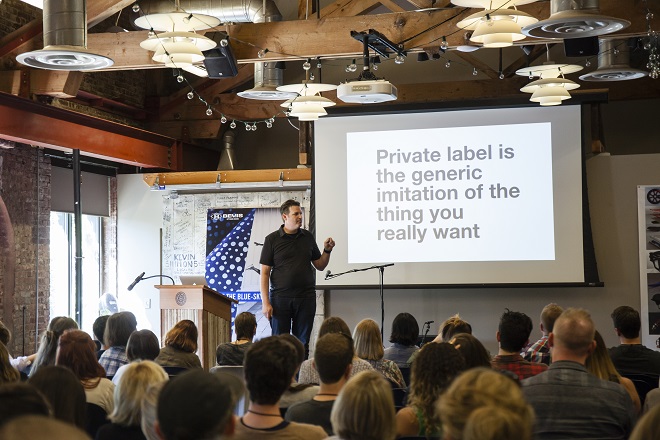
Nasahn also spoke about co-operatives, and the shift from ‘value, to values’ in consumerism. The common ownership of REI by its customers seems a genuine source of pride and inspiration. While Nasahn spoke of the role of private label and co-operatives, one of the biggest takeaways was the democratisation of design. Feeling more like Google than Apple, REI have refocused with a massive program to seek feedback from real customers and people.
After realising that too many of their private label designs were just bringing more rather than better, they underwent a huge purge, cancelling any styles that weren’t bringing something compelling to REI customers. That sounds standard enough, until you hear that they cancelled styles that brought 38% of their private label revenue.
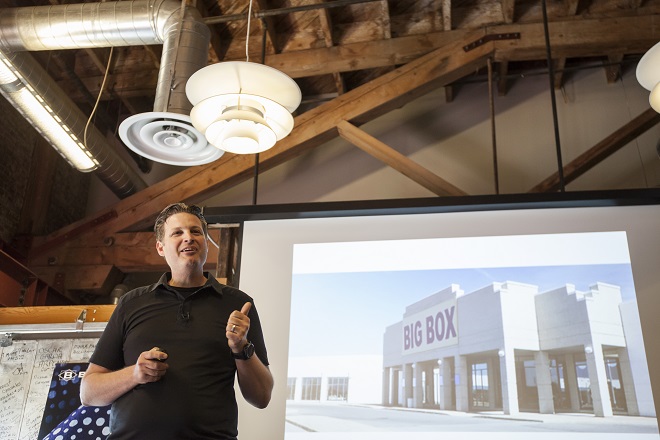
This was a very compelling presentation about the benefits and nimbleness that a private brand can offer when steered correctly, definitely something that a large number of businesses will struggle to compete with as their retail margins will not offer the same competitiveness as the internal vertical market methods.
“After realising that too many of their private label designs were just bringing more rather than better, they underwent a huge purge…”
Oh, and check out Nature Rx to inspire yourself outdoors.
Closing Performance
“I write music. I play the cello and the computer.”
Interesting to note was her refusal to play an event when they asked her life to be compacted into TED talk formula.
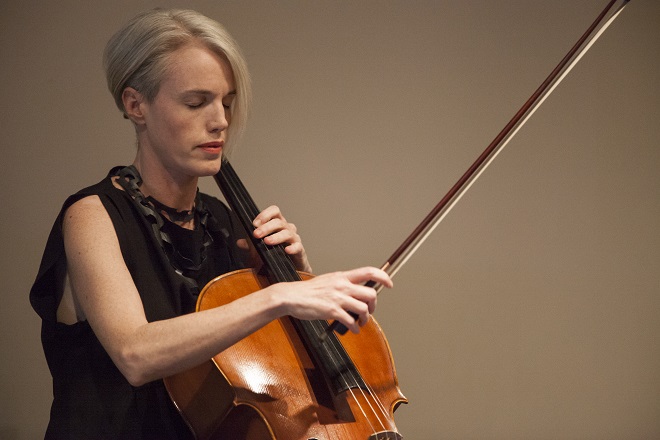
Make yourself vulnerable, make a statement about yourself and be authentic, but authentic within these walls. It was an interesting nod towards the similarities of the ‘authentic’ heritage fashion trend that now feels stale and contrived – or authenticity within these parameters.
Zoë intentionally messes with her software and Apple scripts for her music looping software. This puts her at risk of making a mistake and pushes her to perform better as routine is the antithesis of an engaging performance. Those that know the principles around ‘Flow’ will recognise the wisdom in this.
There was certainly an element to appreciate here of interesting constraints catalysing interesting solutions.
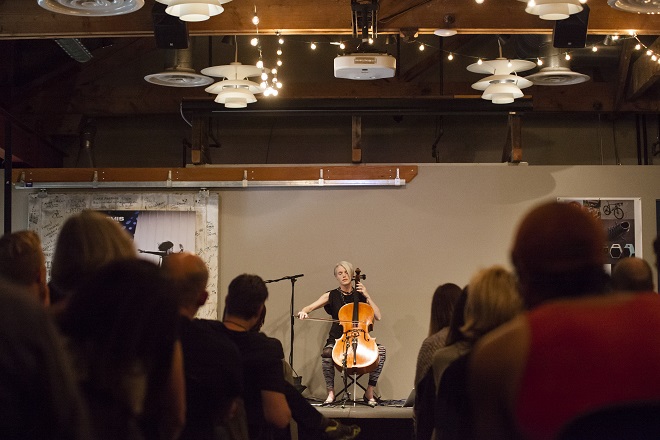





 Carry Awards
Carry Awards Insights
Insights Liking
Liking Projects
Projects Interviews
Interviews
